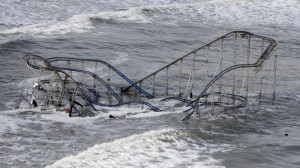In The Discovery of Global Warming, Weart describes a timeline of events and achievements surrounding the study of the Earth’s climate. While the first publication of global warming from human emissions of carbon dioxide was documented in 1896, a century later and it seems as if the global understandings of climate change has been entirely too gradual for the last hundred years. Interestingly, Weart relates the discoveries of global climate change to historic events. Research of climate change was able to advance with technologies from World War II and the Cold War. Scientists learned to track the movements of carbon with radiocarbon dating. The onset of the Cold War also brought a global cooperation and interest in the sciences. The establishment of the United Nations was one method of a forming a global alliance.
Throughout the discovery of global warming, there have been similar patterns of a lack of funding for research efforts and a very nonchalant approach to a problem that seemed so distant. While this book does not cover the most recent years of the twenty-first century, I like to stay optimistic. In more recent years it seems there has been a more committed effort towards being green; plastic bags have been banned in various cities, organic agriculture is on the rise, and there have been more energy efficient cars and products on the market. I think my generation is more committed to conserving our natural resources and reversing climate change than previous.
I’ve lived in the New York/New Jersey area my entire life and even I have noticed peculiar weather instances. The damage caused by Hurricane Sandy devastated the areas surrounding my hometown. My community usually does not have to prepare for strong storms. The rising sea level and increase in surface temperatures can be to blame for the intensity of the storm. Due to climate change and shifting weather patterns, different areas are becoming susceptible to more forceful storms. If this is not a wake up call, then it should be used as a model.
